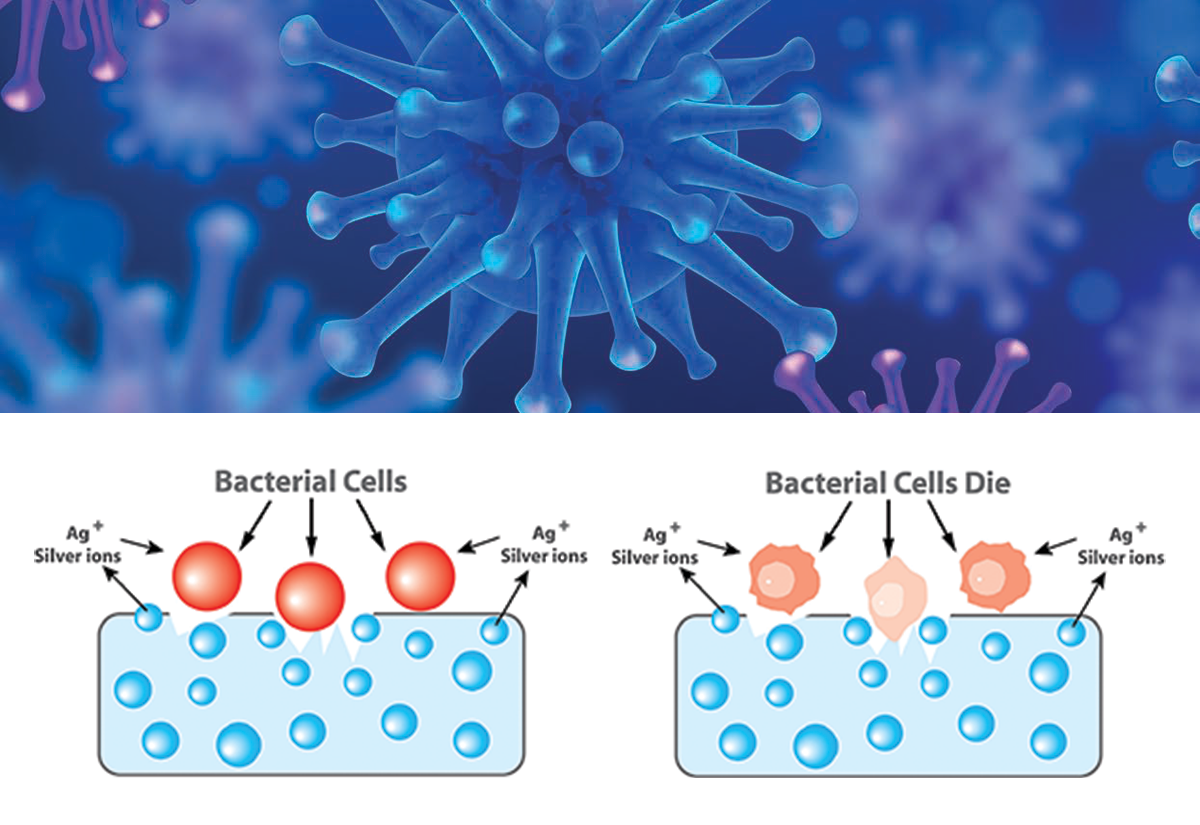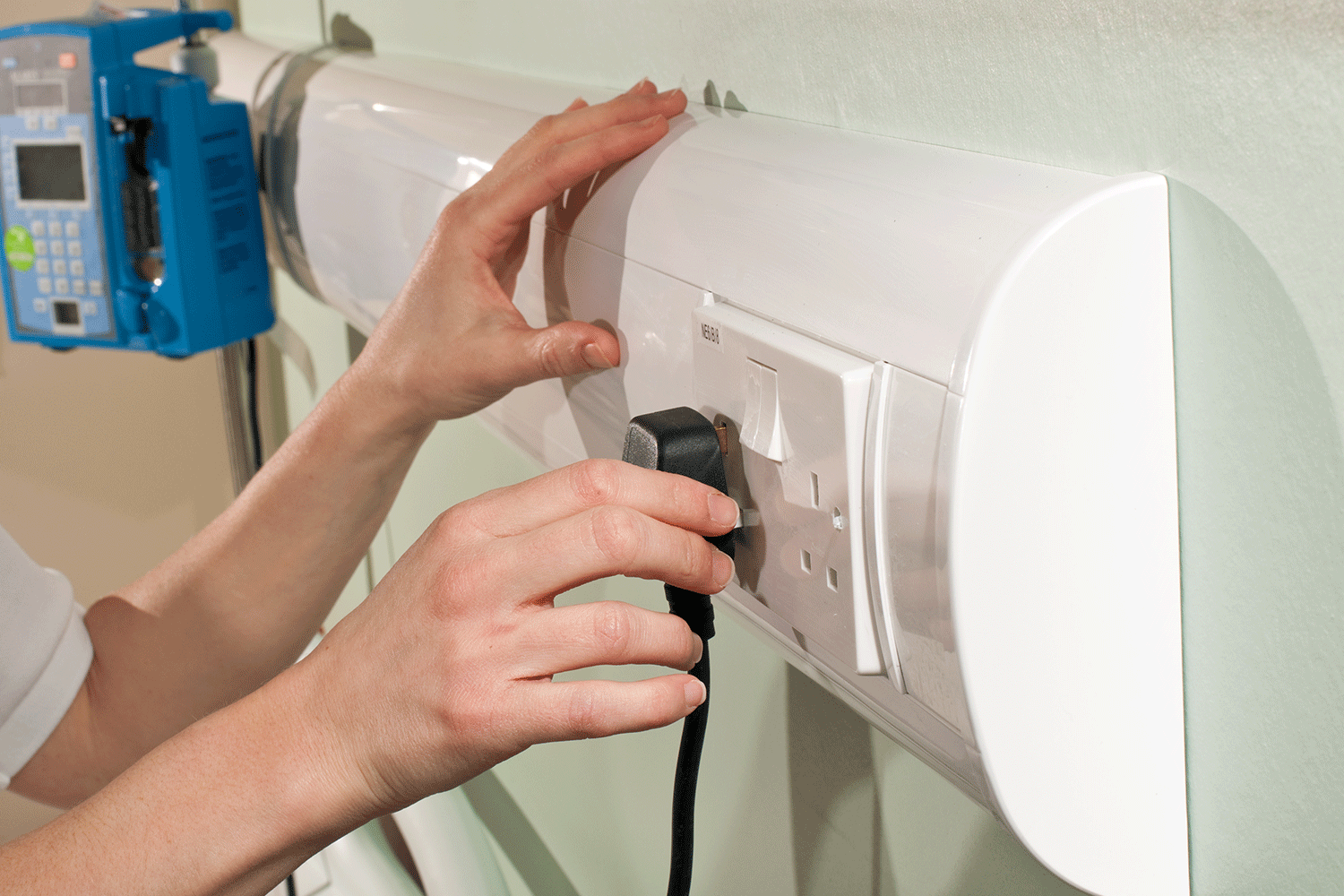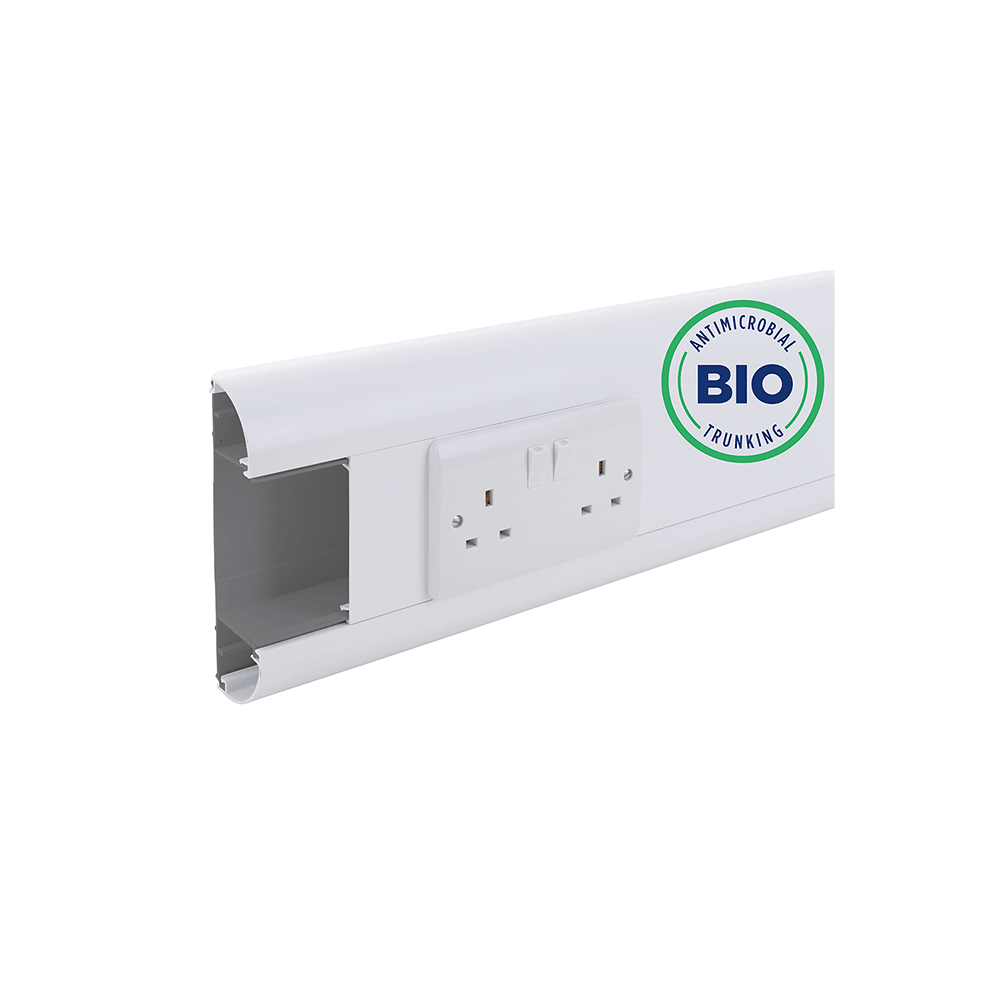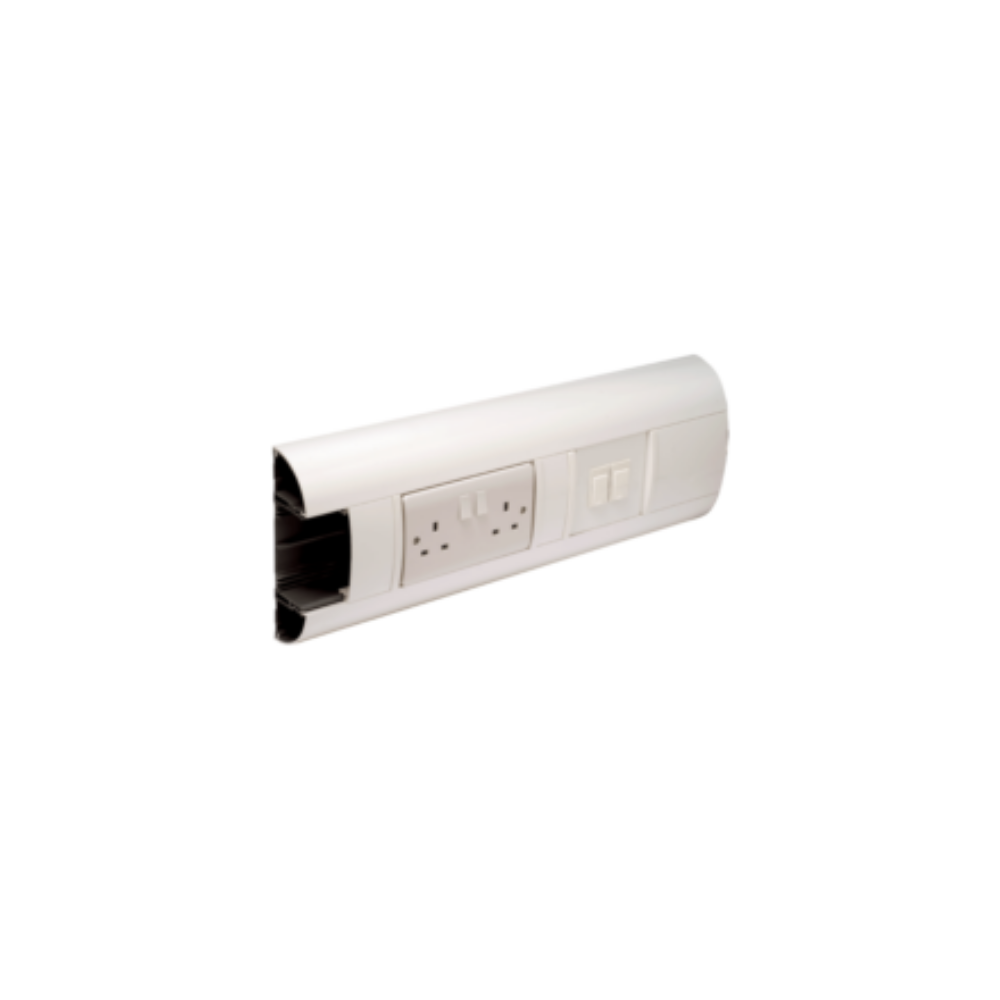Safer with Antimicrobial Trunking
Now, more than ever, keeping spaces hygienic is a critical consideration for building owners. Antimicrobial Trunking solutions are designed to facilitate and optimise the work of installers and put building owners’ minds at peace.
Why use Antimicrobial Trunking?
Any surface within a building that people come into contact with regularly has the potential to spread bacteria. The position of cable management perimeter trunking means intentional and accidental contact with it is common and therefore, must be kept clean and bacteria-free. Products with antimicrobial properties can stop the growth of bacteria, reducing the chance of transmission between people.
Certain microbial organisms are harmful to people and can proliferate to cause infections and disease. There is a need to control these organisms wherever infection control is of importance.

One of the most effective forms of continual, built-in antimicrobial protection is silver ion-based technology
Silver ions manufactured into the surface of the PVC-U or ABS disrupt the key cell functions of bacteria and prevent them from reproducing. Due to the short lifespans of bacteria if it cannot reproduce and grow, it cannot survive to be passed on.
The presence of silver ions in the material has been proven to reduce the bacteria surviving on the surface by 99.9%, This includes Methicillin-Resistant Staphylococcus Aureus (MSA) and Escherichia coli (E. Coli).
Choosing a Reliable Antimicrobial Trunking System
While cable management systems with antimicrobial properties are commonly selected for healthcare environments, they also have benefits for a wide variety of high traffic buildings. These include schools, colleges and universities as well as sports centres, leisure facilities and gyms. When combined with a robust cleaning regime, the antimicrobial properties can protect those using the building from the risks of bacteria spreading.
However, not all systems are built to the same standard so when choosing the products, it is important to consider how they are manufactured. Any antimicrobial trunking systems should meet the ISO 22196:2011 standard and be compliant with the European Biocidal Products Directive (BPD).
The silver ion formulation can be incorporated into the material in two main ways
It can be added to the PVC-U when it is manufactured or applied to the surface post-production. Products with integral silver ions offer more reliable and long-lasting protection as damage to the surface does not undermine its effectiveness. If the coated trunking is scratched or damaged, which is very common overtime in busy, high traffic environments, this will leave areas where the bacteria can survive and multiply.
Finally, it is always advisable to look at the design of the trunking and select a product that has a smooth surface with minimal corners and crevices. Trunking that is easy to clean effectively helps contribute to a safer, more hygienic environment.


Benefits of Antimicrobial Trunking
- Antimicrobial properties inherently formulated within the PVC-U and ABS compounds.
- 99.9% prevention of harmful bacteria growth.
- Durable, non-leaching antimicrobial treatment, provide an extra level of protection when combined with normal cleaning procedures.
- Proven silver ion-based technology to neutralise any bacteria with which it comes into contact.
- The use of a UV light on the external surface of the trunking allows identification of antimicrobial trunking.
- Registration with the Environmental Protection Agency.
- Compliance with the European Biocidal Products Directive.
- Testing to ISO 22196:2011.
Odyssey Bio & Sterling Curve Bio Trunking



